Two different versions of my delicious lemon buttercream – one made with fresh lemons (juice and zest) and another made with either lemon extract or oil. Perfect for decorating cakes and cupcakes or filling biscuits and macarons.
Jump to the recipe made with fresh lemon zest and juice or lemon extract/oil
One of my most requested new recipes is lemon buttercream (and a lemon birthday cake to go with it!). It’s something I’ve not shared until now because I had a massive dilemma about the best way to make the buttercream. Should it be flavoured with lemon extract/oil, or should I opt for fresh lemon zest and juice?
Both types of buttercream are delicious, and both have times when they really come into their own. In the end, I decided the only solution was to share both.
This lemon buttercream goes brilliantly with both my carrot cake cupcakes and gingerbread cupcakes and I’ll be sharing my recipes for the lemon cupcakes shown in these pictures (which I also filled with lemon curd for an extra burst of lemon flavour), and my full-sized lemon cake soon. I’ll add the links here when I do, and if you want to make sure you don’t miss these new recipes when they’re published make sure you subscribe to my mailing list.
When to use buttercream made with fresh lemon zest and juice
Lemon buttercream made with fresh zest and juice is best when you want your buttercream to really pack a punch. You’ll see from the recipe that I’ve added a lot of zest for flavour and then a little lemon juice for added sharpness. The addition of the lemon juice really adds a kick to the buttercream.
You’ll notice that I’ve used more zest than juice in the recipe. After a lot of testing, I found this gave just the right balance of flavours. It does mean that you’ll have some juice leftover, but don’t worry about waste. Lemon juice freezes really well for you to use later – I like to put the juice of ½ a lemon in each square of an ice cube tray and then I can defrost it as I need it. I’ve also added a list of recipe ideas below for using up lemon juice for you to try.
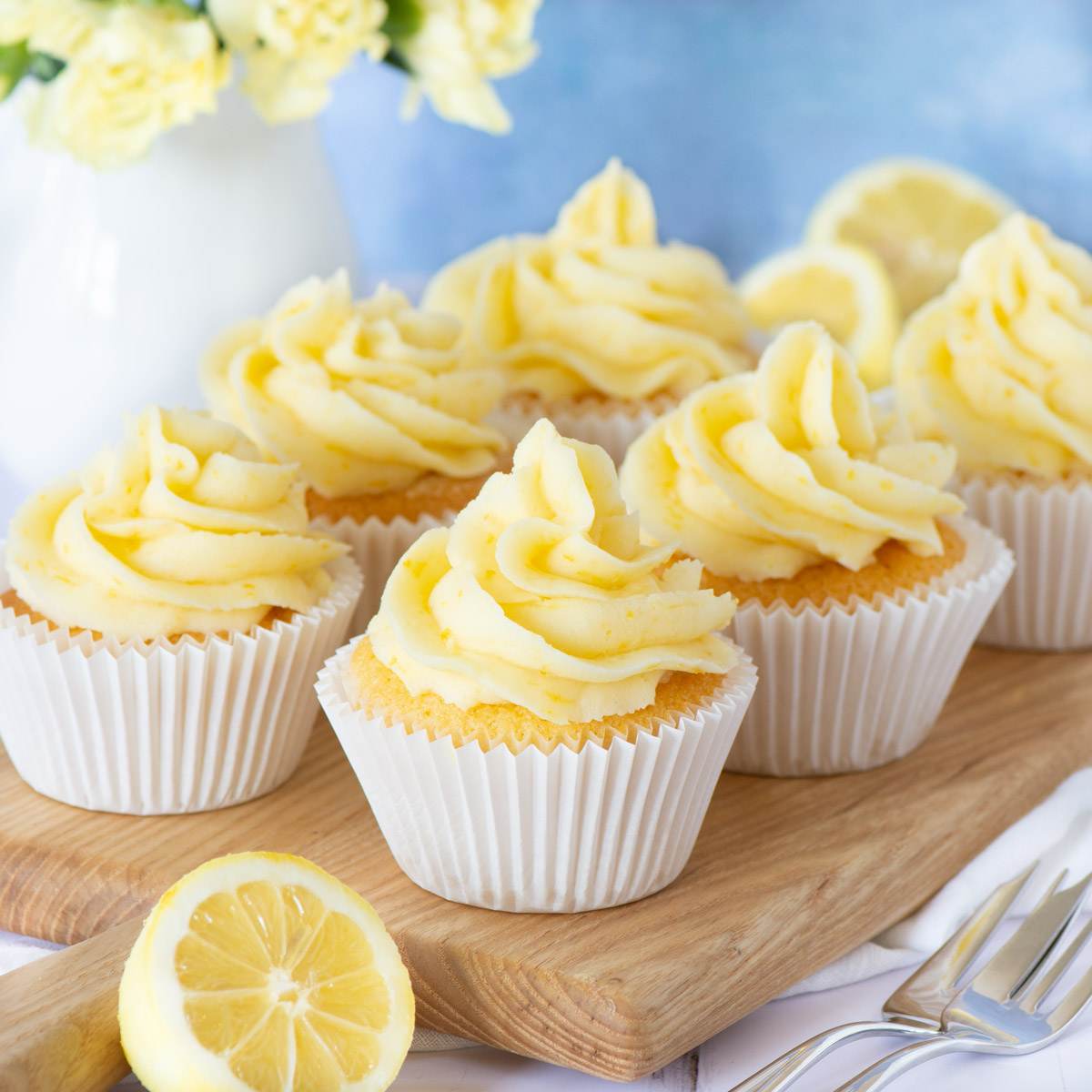
Lemon Buttercream made with fresh lemon juice and zest
When to use lemon buttercream made using lemon extract/oil
Lemon buttercream made with extract or oil is better when you want a more subtle lemon flavour in your buttercream. When I tested the two buttercream types on my family, I found that adults enjoyed the kick of the buttercream made with fresh lemons and the children preferred the one made with extract. When I was a child I remember not liking the sharpness of lemon (how my tastes have changed as an adult because now I love it!), this version of the buttercream keeps the flavour but loses the sharpness you get from the fresh lemons.
If you’re planning on piping your buttercream then I’d recommend using the version made with lemon extract. You can see from the pictures that it’s silky smooth, whereas the buttercream made with fresh lemon has flecks of lemon zest running through it. It still pipes OK, but you can see the edges aren’t as clearly defined and if you were planning on using a smaller nozzle than the one I’ve used here (JEM1B) you may find that the nozzle gets clogged by the zest.
The other big advantage to this version of the buttercream is that it’s made from ingredients I always have in my store cupboard/fridge – butter, icing sugar, lemon extract and milk. It’s therefore perfect for those times that I need to bake a cake at the last minute and I haven’t had a chance to go to the shops, as I only buy fresh lemons when I know I’m planning to use them. It also means you don’t have to think about what to do with the leftover lemon juice.
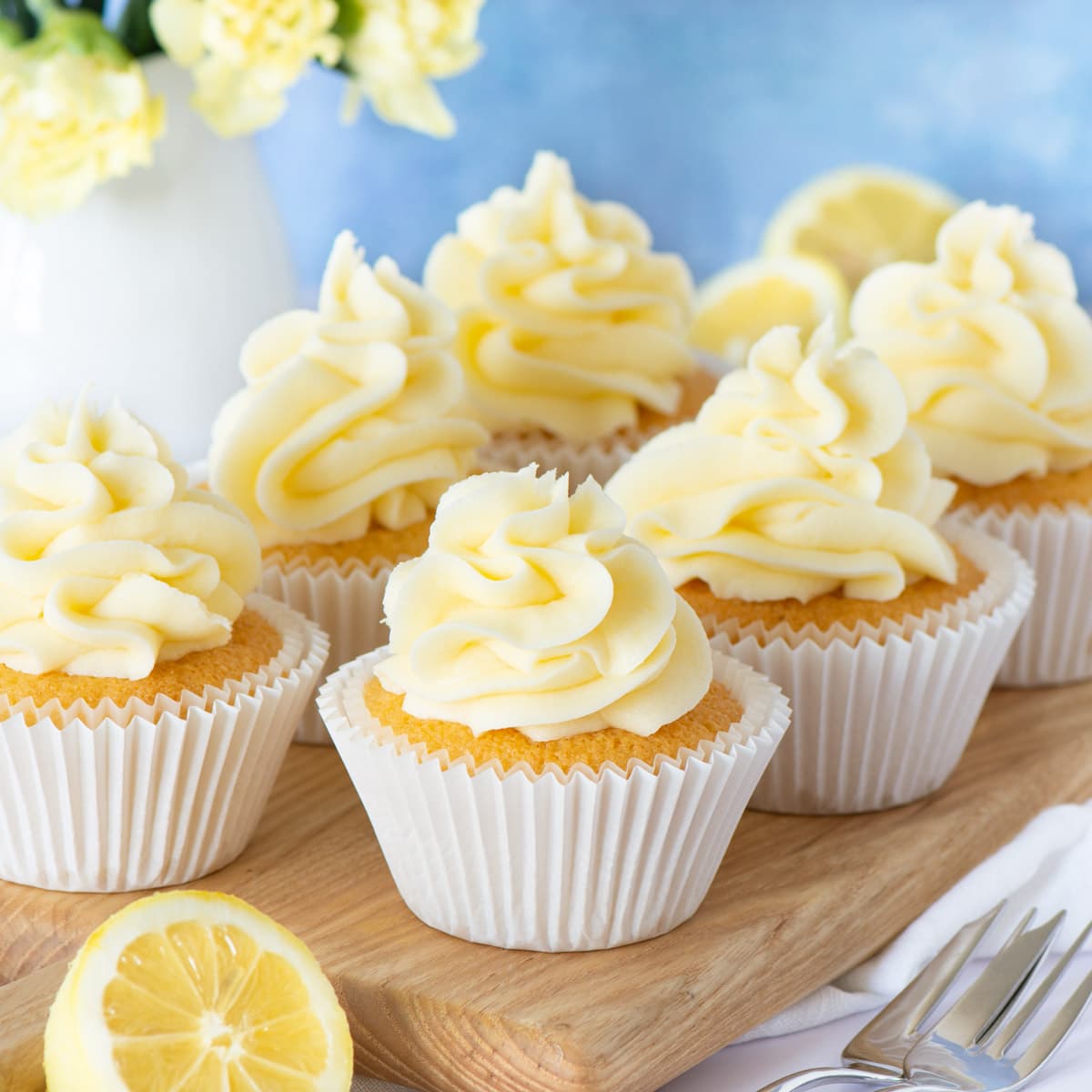
Lemon Buttercream made with lemon extract/oil
Does this buttercream crust?
Yes, it’s based on a standard buttercream with twice the amount of icing sugar to butter and so it crusts just as that would. It’s therefore perfect for piping more intricate shapes such as buttercream flowers and also for using under fondant on a decorated cake.
Can this lemon buttercream be made vegan/dairy-free?
Absolutely, it’s pretty straightforward to adapt the recipe to be vegan/dairy-free.
All you need to do is switch the 250g of butter in the recipe for 125g of dairy-free/vegan margarine (I use Pure Sunflower) and 125g of a vegetable oil block such as Stork Baking Block or Trex. Then switch the milk added at the end for a dairy-free alternative such as almond milk.
The vegan margarine adds flavour to the buttercream and the vegetable oil block adds firmness, so your buttercream is just the right consistency for piping.
If you’d like to read more about making vegan buttercream take a look at my vegan vanilla buttercream recipe where I’ve gone into more detail.
Ideas for using up lemon juice
As I mentioned before, this recipe uses more lemon zest than juice so here are some delicious recipes you can try to use up the leftover lemon juice.
- Lemon Cheesecake from Apply To Face
- Lemon Posset from Fuss Free Flavours
- Shortbread Lemon Bars from Sugar & Soul
- Moist Lemon Cake from Living Sweet Moments
- Lemon Blueberry Cake from Cooking With Carlee
- Watermelon Lemonade from Caroline’s Cooking
- Frozen Lemonade from Finding Zest
- Ginger Beer & Gin Cocktail from Greedy Gourmet
- Caribbean Rum Punch from Earth Food & Fire
- Spiked Lemon Shake-Up Cocktail from Mama Gourmand
Some of the recipes listed use cups measurements rather than grams. If you’d like to convert between the two then I have a handy conversions calculator you can use.
FREE GRAMS TO CUPS CONVERSION CHARTS
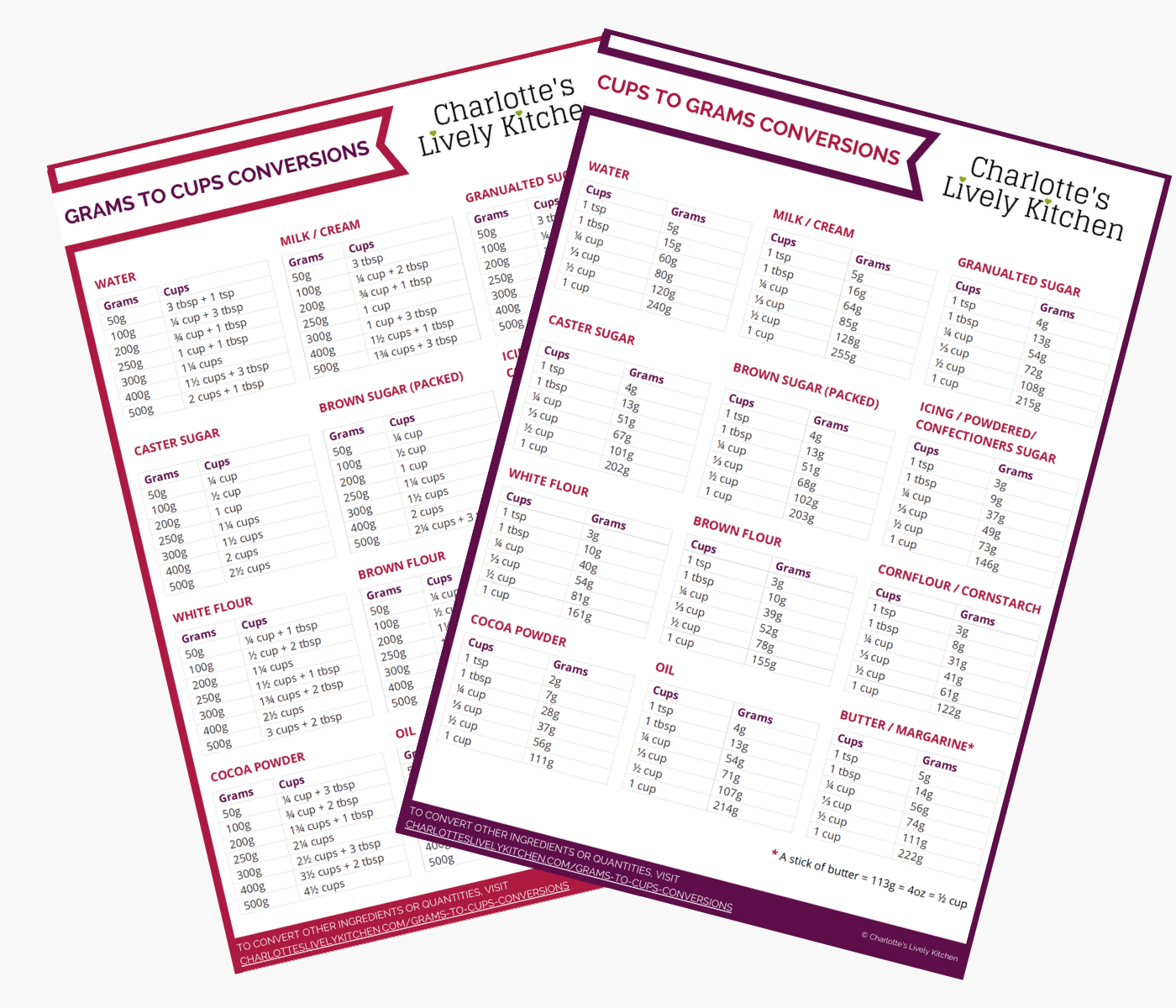
Subscribe to the Charlotte's Lively Kitchen mailing list to get your FREE printable grams to cups and cups to grams conversion charts for twelve popular baking ingredients

Lemon Buttercream
INGREDIENTS
- 250 g butter - soft at room temperature
- 500 g icing sugar
- Zest of 5 lemons
- 1 tbsp lemon juice - The juice from approximately ½ a lemon
- A little milk - To help get the buttercream to a soft consistency
INSTRUCTIONS
- Beat the butter (250g) on a low speed until it is soft.
- Add the icing sugar (500g) and beat until combined - I like to add mine a spoonful at a time as it helps stop it flying out of the bowl!
- Finely grate the zest of 5 lemons. Squeeze the juice from the lemons until you have 1 tbsp.
- Add the lemon zest to the buttercream and beat until it is evenly distributed. Slowly add the lemon juice (no more than 1 tsp at a time) and beat in each addition before adding more.
- Check the consistency of your buttercream - It should be soft enough that you could spread it onto a slice of bread without the bread tearing, but not runny. If it is a little stiff, then add a little milk (again no more than 1 tsp at a time) until is it the right consistency.
- Your buttercream is now ready to use.
NOTES
NUTRITIONAL INFORMATION
Any nutritional information provided is the estimated nutritional information per serving. Please refer to my guide to Charlotte’s Lively Kitchen nutritional information if you would like to learn more about how this is calculated.
FREE FROM/SUITABLE FOR…
The ingredients I used to make this recipe are all free from the following allergens. However, please check any labels carefully for allergens you need to avoid as brands can vary and product recipes can change over time.
- Suitable for Vegetarians
- Gluten-Free
- Egg-Free
- Tree Nut-Free
- Peanut-Free
- Sesame-Free
- Soya-Free
- Sulphur Dioxide & Sulphite-Free
- Lupin-Free
This list of allergens is the same regardless of which version of the buttercream you choose to make.
There are details of how to adapt this lemon buttercream to be vegan/dairy-free above the recipe.
FREE GRAMS TO CUPS CONVERSION CHARTS

Subscribe to the Charlotte's Lively Kitchen mailing list to get your FREE printable grams to cups and cups to grams conversion charts for twelve popular baking ingredients

Lemon Buttercream
INGREDIENTS
- 250 g butter - soft at room temperature
- 500 g icing sugar
- 1 tbsp lemon extract/lemon oil - (can use a little more or less according to your own taste
- A little milk - To help get the buttercream to a soft consistency
INSTRUCTIONS
- Beat the butter (250g) on a low speed until it is soft.
- Add the icing sugar (500g) and beat until combined - I like to add mine a spoonful at a time as it helps stop it flying out of the bowl!
- Slowly add the lemon extract/oil (1 tbsp - add no more than 1 tsp at a time) and beat in each addition before adding more.
- Check the consistency of your buttercream - It should be soft enough that you could spread it onto a slice of bread without the bread tearing, but not runny. If it is a little stiff, then add a little milk (again no more than 1 tsp at a time) until is it the right consistency.
- Your buttercream is now ready to use.
NOTES
NUTRITIONAL INFORMATION
Any nutritional information provided is the estimated nutritional information per serving. Please refer to my guide to Charlotte’s Lively Kitchen nutritional information if you would like to learn more about how this is calculated.
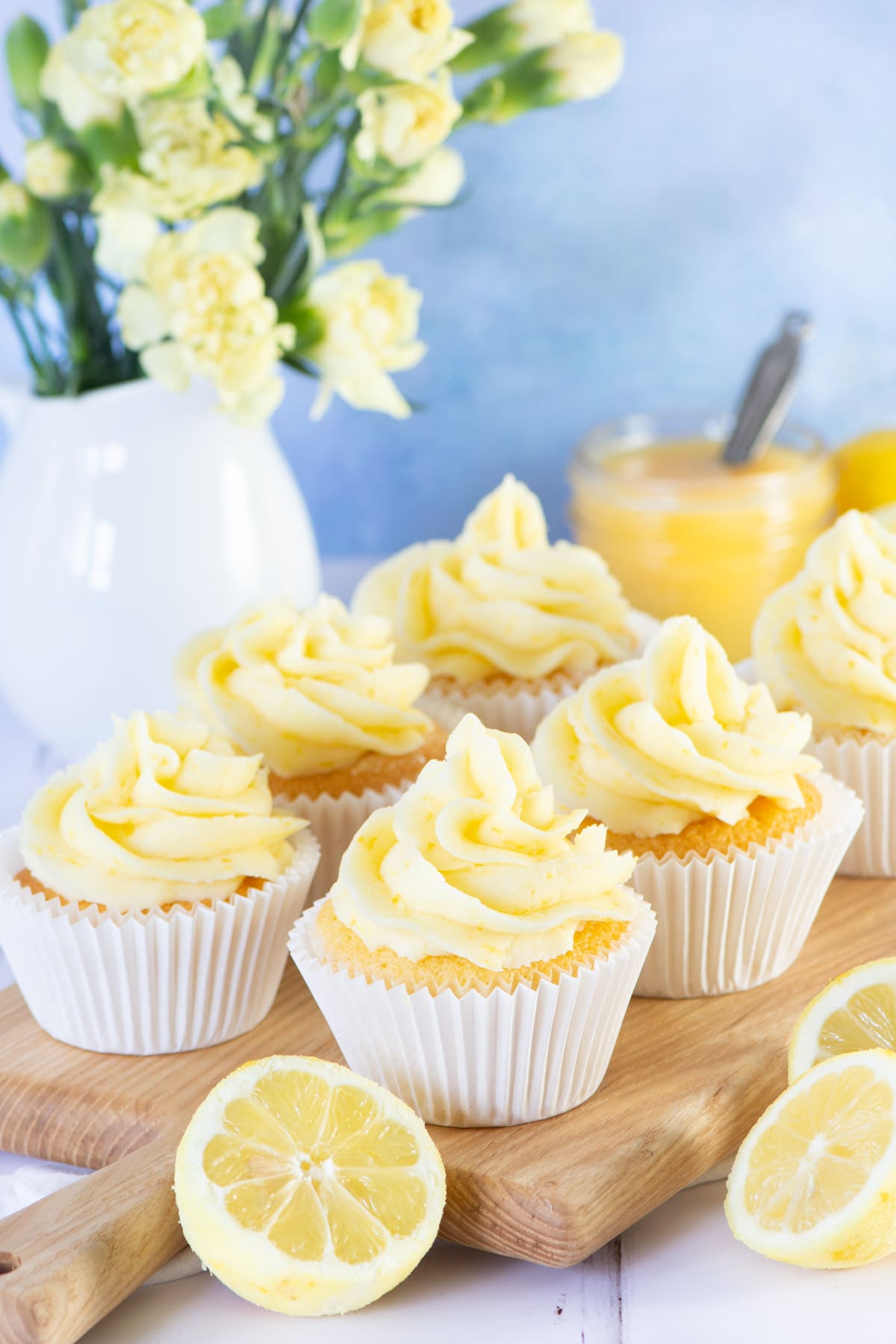
Two different versions of my delicious lemon buttercream – one made with fresh lemons (juice and zest) and another made with either lemon extract or oil. Perfect for decorating cakes and cupcakes or filling biscuits and macarons.


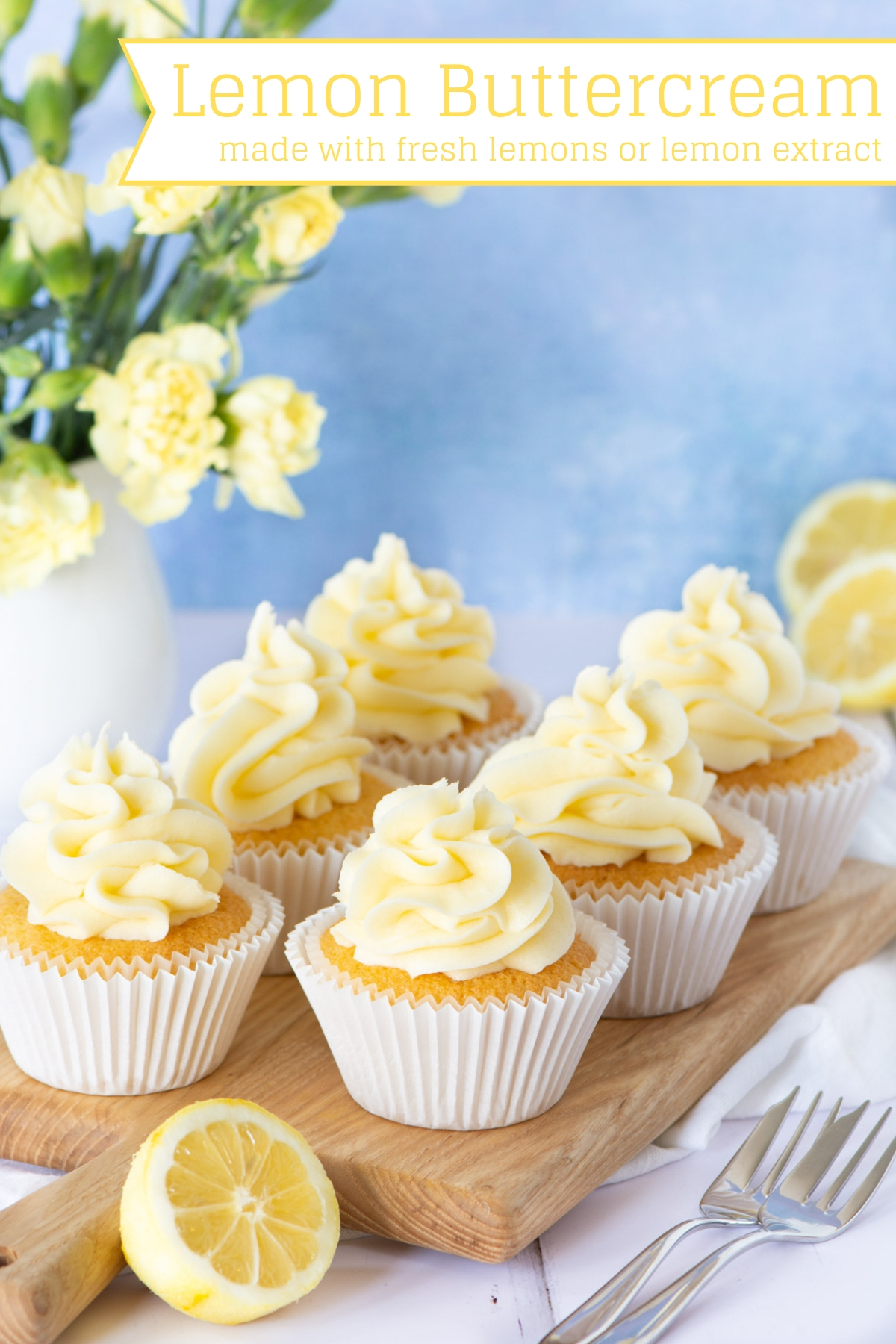
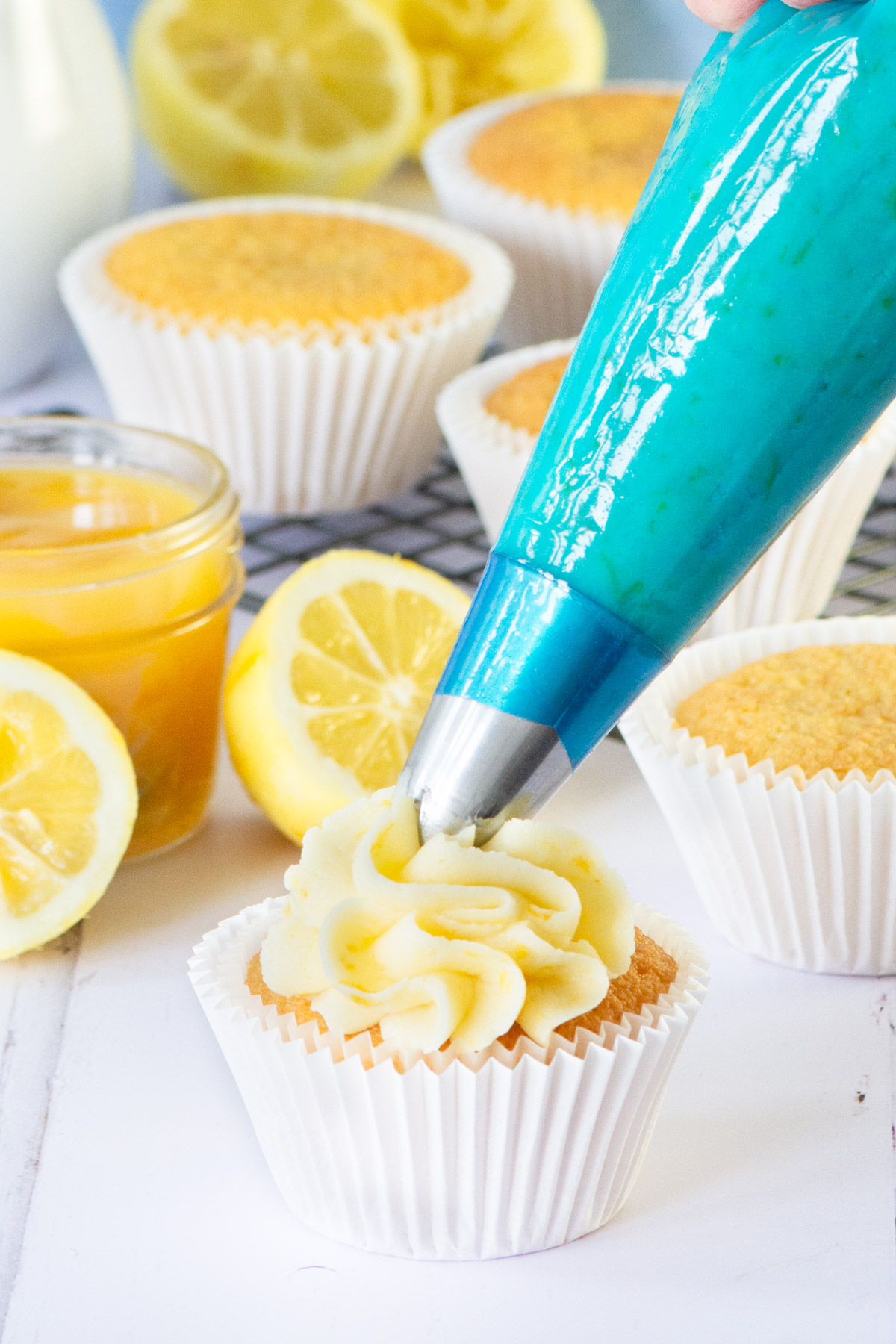
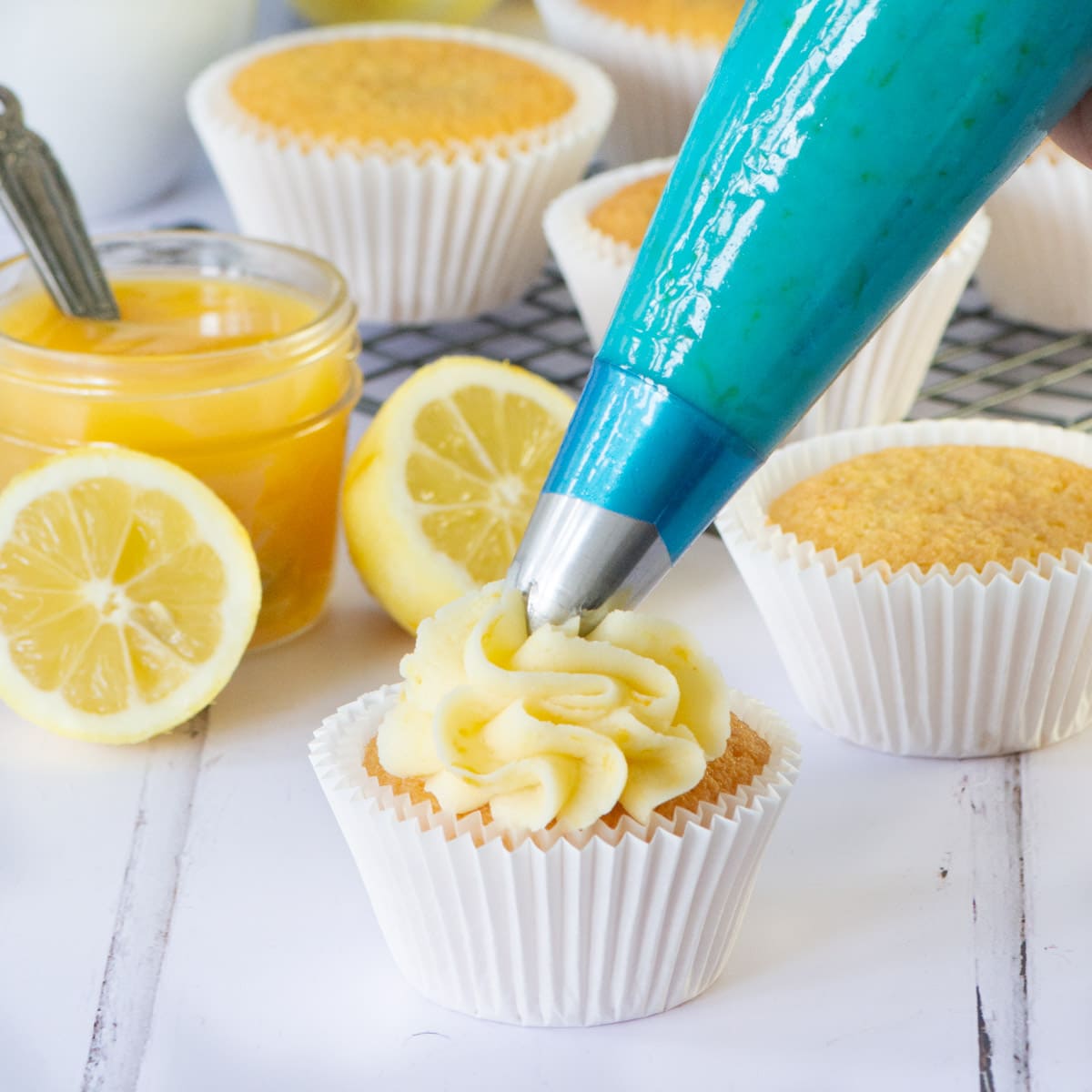
Lory says
I made this lemon butter cream, using lemon extract, to decorate vanilla sugar cookies. I didn’t tell my husband that it was lemon, and when he took one bite, he exclaimed, “Oh wow! Lemon!” and he said that this is the only icing I should ever use to decorate my sugar cookies from now on. I was not the least bit offended because this was the creamiest, fluffiest, most wonderful lemon icing I have ever tasted! I can’t wait to try the recipe using fresh lemons! Thank you so much for sharing this fabulous recipe with all of us! <3
Heather says
Could not get the right consistency by following the recipe. Had to add nearly double the amount of icing sugar which still didn’t work. It’s a very runny butter cream more like a runny icing than a buttercream
Charlotte Oates says
The most common reason that people seem to experience this problem is when using a butter that isn’t proper block butter. What butter did you use?
zoe says
Can this butter cream be frozen? if not how many days will it last in the fridge?
Charlotte Oates says
You can. Make sure you allow it to thaw and come up to room temperature and then if needed, beat in a little extra milk (no more that 1 teaspoon at a time) to soften it as it may become too stiff to use during the freezing process.